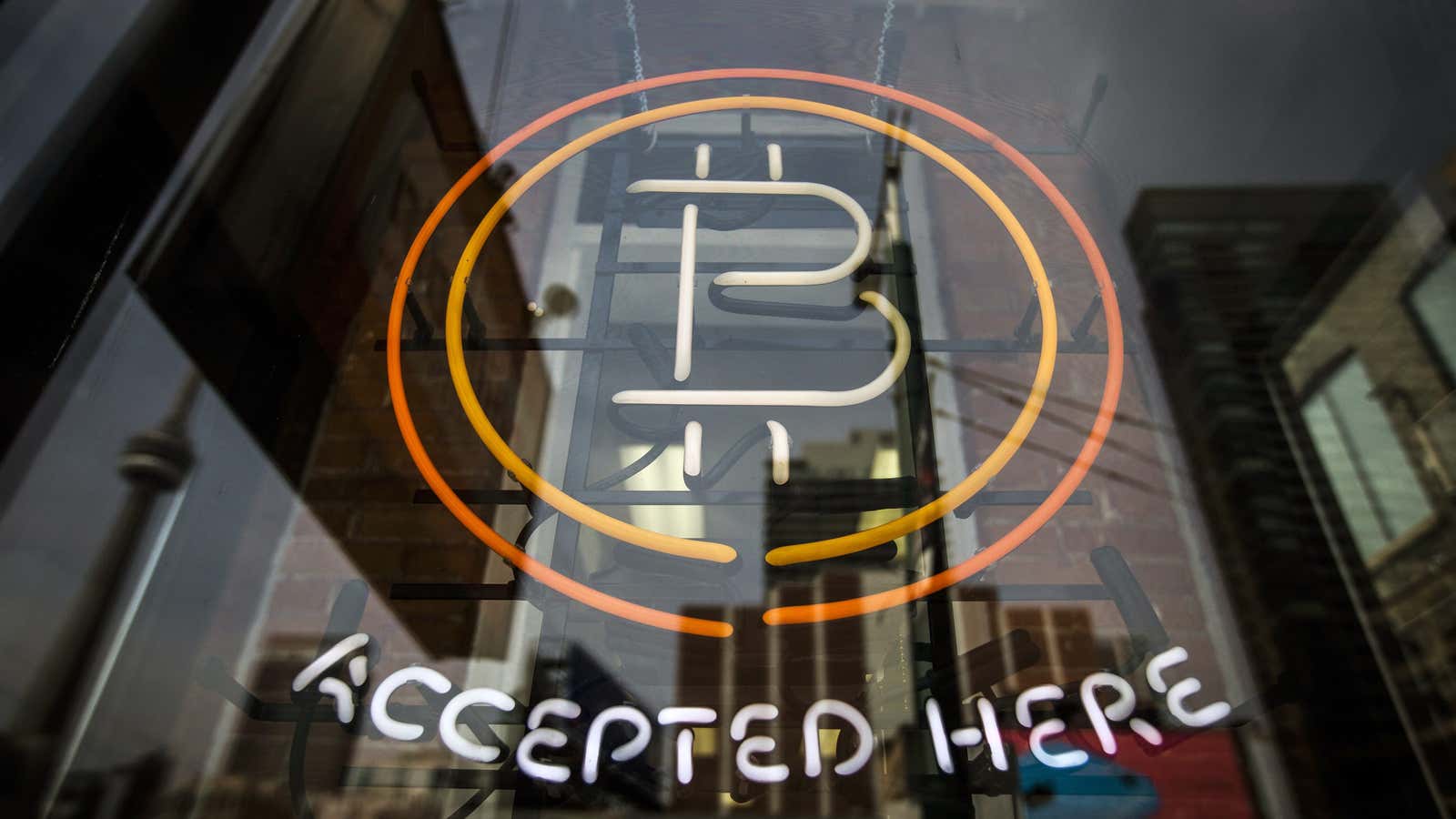An Australian entrepreneur claimed today (May 2) that he is bitcoin’s inventor, the pseudonymous Satoshi Nakamoto. The Australian, Craig Wright, has written an extensive blog post claiming to provide cryptographic evidence that he is Nakamoto, and he orchestrated the simultaneous publication of three pieces, from the Economist, GQ, and the BBC, broadcasting his claims.
But the Economist, at least, remained unconvinced, concluding that it is “not so sure” that Wright is bitcoin’s creator. And there are now a flurry of claims and counter-claims on the internet, analyzing and weighing Wright’s evidence.
It’s easy to see why so many are scrambling to parse Wright’s claim. Bitcoin, after all, has ignited an explosion of activity in the usually dull expanses of the international financial system’s back offices. Bitcoin itself has become a spectacular success: All the bitcoin in circulation today is worth about $7 billion; and indeed, it was the best performing currency of 2015. Bankers and governments have stopped fighting it, but are instead seeking to use the concept underpinning it–the blockchain–to radically alter the plumbing of international finance.
But while the question of Satoshi’s identity is a fascinating internet riddle, with more than a tinge of Keyser Söze-like mythology around it, the truth is, it doesn’t really matter. Here’s why.
Satoshi is not bitcoin’s central banker
Satoshi set out to design bitcoin as a decentralized digital currency, meaning no single party could control the transactions on the network, unlike the fiat currencies issued by a central bank, for instance. This decentralized design means that the miners who verify transactions on the bitcoin network must compete and co-exist with one another, and the product of their competition is a more secure bitcoin network, as they add more processing power to secure it (we wrote an explainer on this).
The one weakness of bitcoin’s system is the possibility of a so-called 51% attack, where a single miner controls more than half of the processing power on the bitcoin network. Such a miner could then theoretically approve the spending of coins she didn’t own. But even if that scenario were to happen–it hasn’t yet–it would quickly lead to a devaluing of the currency, thus undermining the profit motive of such a powerful miner.
Satoshi is not bitcoin’s “decider”
Bitcoin’s model stands in stark contrast to that employed at other globe-spanning open-source software projects. Take Linus Torvalds, the creator of the Linux operating system. Like Satoshi and the army of crypto-anarchists and libertarians that bitcoin inspired, Linux was once the standard-bearer of the free software movement, with corporate giants like Microsoft painted as the enemy. The fervor was real, just as it is for bitcoin today.
Torvalds is well known as the benevolent dictator who has the final say over whether a contributed piece of code is added to software or not. He is “The Decider,” and for a period of time, there were fears that if something were to happen to him (even the birth of his child, which some true believers thought might distract him) that the Linux project would founder.
Unlike Linus, Satoshi isn’t the decider, and he doesn’t have the power to influence bitcoin’s code one way or the other–at least not anymore. Changes to bitcoin’s code are now governed by a system of public proposals and approvals called the “bitcoin improvement proposal” process. The actual power of making changes to the open-source bitcoin code now rests in the hands of Wladimir Van Der Laan, a bitcoin developer funded by the MIT Media Lab. Van Der Laan is the second “maintainer” of the open-source bitcoin code, after Gavin Andresen, who was appointed by Satoshi himself.
Satoshi’s “hoard” is unlikely to come into play
There is one more important reason to be curious about who Satoshi is. That’s Satoshi’s hoard, or the approximately 1 million bitcoins that the cryptocurrency’s inventor is thought to possess, gained from being its first miner, worth $450 million today. The bitcoin market has already given its verdict on a Satoshi outing: The price of bitcoin fell $12 from $450—about 3%—as news of Wright’s claims broke.
The fear is that with Satoshi publicly identified, he could now spend his hitherto inactive millions, causing unpredictable market movements in the already volatile exchange rate of the cryptocurrency. A worst-case scenario for bitcoin bulls would see Satoshi liquidating his entire fortune on the open market, driving prices down. But even that situation requires one to believe Satoshi would be willing to endure massive “slippage” on his coin’s values as he sells them, and to simultaneously destroy the market’s faith in bitcoin.
Wright may indeed be Satoshi. And he may well have groundbreaking new research, as he told the Economist, that will improve the way bitcoin works. But the very system Satoshi designed means that anyone can contribute that research. It doesn’t have to be Satoshi.
As Peter Todd, a bitcoin core developer, told Quartz: ”It has no technical effect on the system; the [identity] of Satoshi is just a historical curiosity.”
